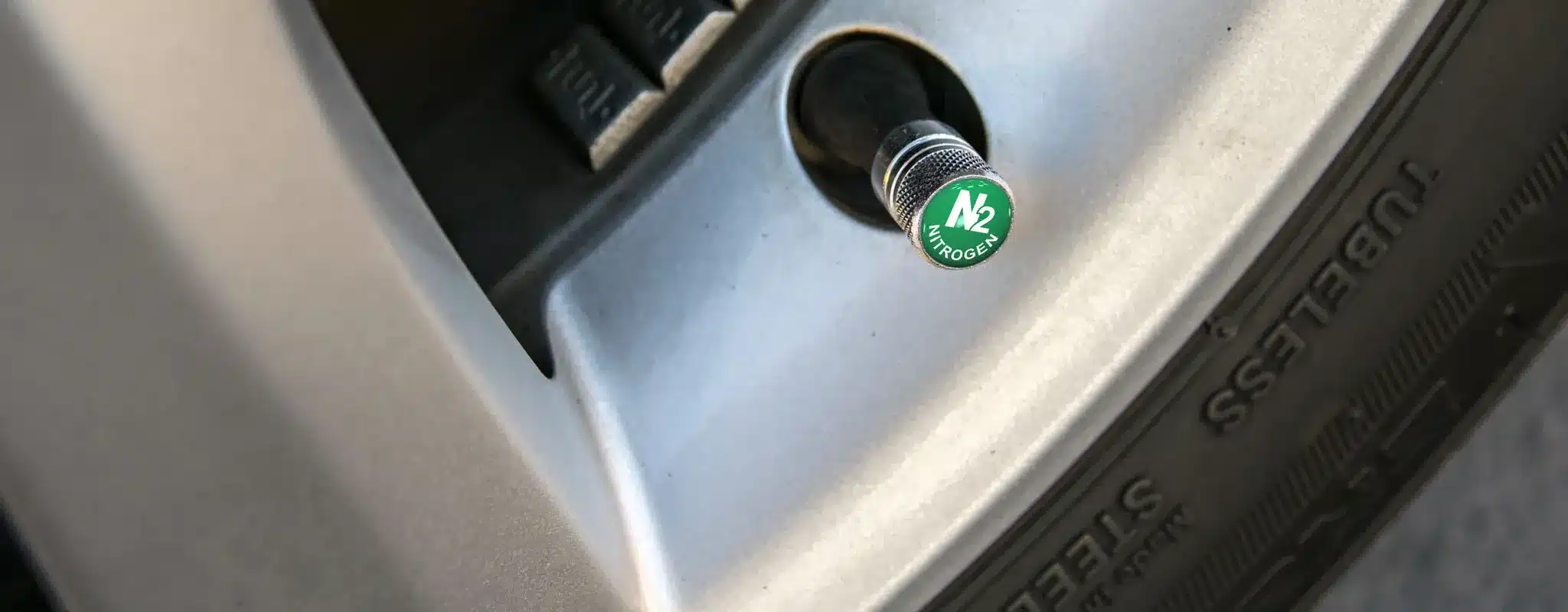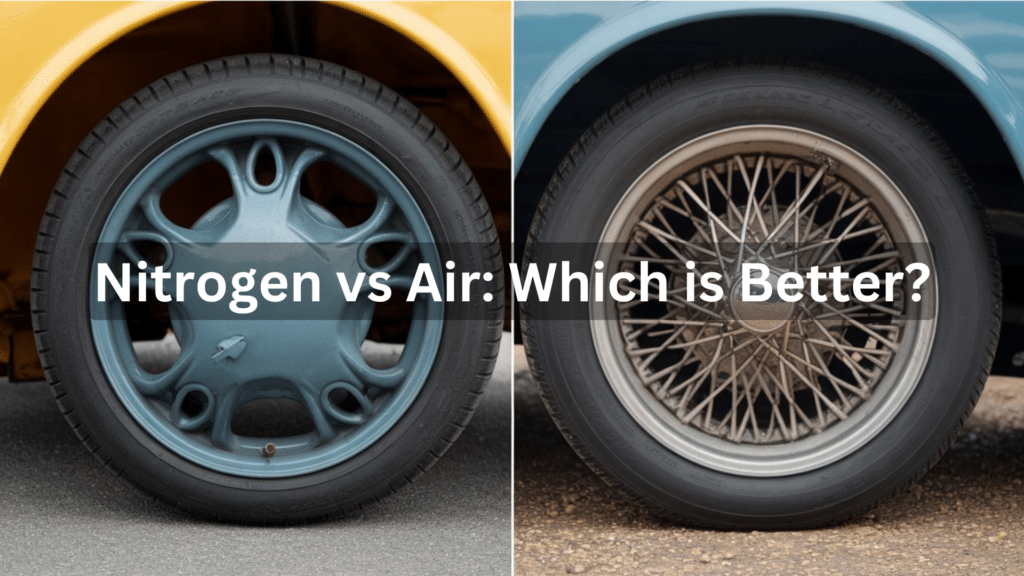Have you ever wondered if those green valve caps on some car tires are just for show? They actually mean something important – those tires are filled with nitrogen instead of regular air!
In this article, I’ll explain what makes nitrogen different from regular air in your tires. You’ll learn about the pros and cons of each option, and I’ll help you decide which is better for your car.
By the time you finish reading, you’ll know exactly whether those fancy nitrogen-filled tires are worth the extra money or if you should stick with regular air.
The Science Behind Nitrogen vs Air in Tires

Let’s start with the basics. What exactly are you putting in your tires when you fill them up at the gas station?
Regular air isn’t just one thing. It’s a mix of different gases:
- 78% nitrogen
- 21% oxygen
- 1% other gases (like carbon dioxide and water vapor)
Pure nitrogen is just nitrogen – the same gas that makes up most of our air, but without the oxygen and other gases mixed in.
This small difference might seem unimportant, but it changes your tires’ performance over time.
The Difference Between the Two: Which is Better?
The main difference comes down to how these gases behave inside your tires.
Regular air contains oxygen and moisture. These can cause problems:
- Oxygen can slowly damage rubber from the inside
- Water vapor expands and contracts as temperatures change
- This can lead to pressure changes and faster air loss
Nitrogen is dry and doesn’t react with your tire materials:
- It stays at a more stable pressure when temperatures change
- It escapes through tiny holes in the rubber more slowly
- It doesn’t contain moisture that can cause problems
So, is nitrogen better? It depends on what you need and how you drive.
Advantages of Nitrogen Tires over Normal Tires
There are a few reasons that make nitrogen-based tires a better pick for your car.
Here’s where nitrogen shines:
- More stable pressure: Nitrogen doesn’t expand or contract as much when temperatures change. This means more consistent tire pressure, which can improve gas mileage and even tire wear.
- Slower leakage: Nitrogen molecules are bigger than oxygen molecules, so they escape through the tiny pores in your tire rubber more slowly. Your tires stay properly inflated longer.
- Less internal damage: Oxygen can gradually break down rubber and corrode metal wheels from the inside, but nitrogen doesn’t cause this kind of damage.
- No moisture issues: Regular air contains water vapor that can condense inside your tires when temperatures change. This can throw off pressure readings and even cause corrosion. Nitrogen is dry.
- Better for infrequently used vehicles: If you have a car you only drive occasionally, nitrogen helps maintain proper pressure between drives.
Disadvantages of Nitrogen Tires
Nothing is perfect. Neither are nitrogen-based tires. They carry their own set of disadvantages you should consider before making your purchase.
Here are the downsides:
- More expensive: Filling your tires with nitrogen costs $5-$10 per tire. Regular air is often free or very cheap at gas stations.
- Less convenient: Not every gas station offers nitrogen fills. If you lose pressure on the road, you might need to mix regular air with your nitrogen (which is fine in a pinch).
- Minimal benefit for everyday drivers: If you check your tire pressure regularly and drive your car often, the benefits of nitrogen might not be worth the extra cost and hassle.
- It still requires pressure checks: Even with nitrogen, you still need to check your tire pressure regularly. Nitrogen leaks more slowly, but it still leaks!
Conclusion
So what’s the bottom line? Here’s my practical advice:
Nitrogen makes sense if:
- You own high-performance or expensive vehicles
- You don’t check your tire pressure often
- You have vehicles you only drive occasionally
- You live where temperatures change dramatically
- You don’t mind paying extra for potentially longer tire life
Regular air is probably fine if:
- You check your tire pressure monthly (like you should!)
- You drive your car regularly.
- You want the most convenient and affordable option
- You don’t mind topping off your tires more frequently
The most important thing is keeping your tires properly inflated isn’t what gas you use – it’s keeping your tires properly. Underinflated tires, whether filled with nitrogen or regular air, waste gas and wear out faster.
Remember: Check your tire pressure monthly, regardless of what’s inside them!
Frequently Asked Questions
Can I Mix Nitrogen and Regular Air?
Yes, it’s completely safe. Your tires already contain mostly nitrogen anyway, so you’ll dilute some of the benefits of pure nitrogen.
How Do I Know if My Tires Have Nitrogen?
Look for green valve caps instead of black or metal ones. Green caps typically indicate nitrogen-filled tires.
Is It Worth Converting to Nitrogen if I Already Have Air?
It’s usually not worth the cost unless you’re replacing your tires anyway. The benefits of fresh tires come over time.
Do Race Cars Use Nitrogen?
Yes! NASCAR and Formula 1 teams use nitrogen because the pressure stays more consistent as tires heat up during racing.
Will Nitrogen Improve My Fuel Economy?
Possibly, but only slightly. The main benefit is that properly inflated tires improve gas mileage, and nitrogen helps maintain proper inflation longer.


